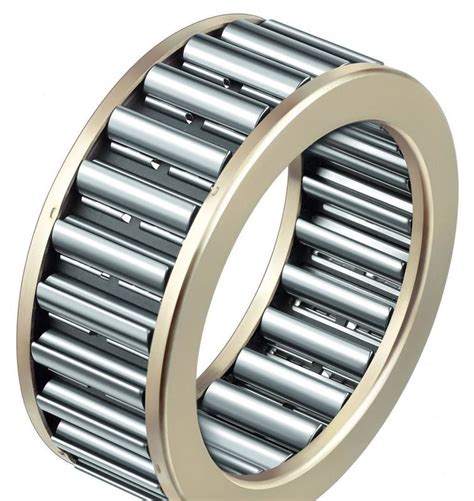Needle Roller Bearings: A Precision Machine's Secret Weapon
In the intricate world of mechanical engineering, precision and efficiency reign supreme. Among the unsung heroes that enable this realm is the needle roller bearing, a remarkable device that has revolutionized countless industries. From high-performance engines to delicate surgical instruments, needle roller bearings play a pivotal role in ensuring smooth operation and extended lifespan.
Anatomy of a Needle Roller Bearing
At the heart of a needle roller bearing lies a set of cylindrical rollers, meticulously designed to minimize friction and maximize load capacity. These rollers are typically made of hardened steel, providing exceptional durability and resistance to wear. They are contained within a precision-crafted outer ring and an inner ring, the latter of which rotates within the outer ring.
Types of Needle Roller Bearings
Needle roller bearings come in various types, each tailored to specific applications. The most common configurations include:
-
Drawn Cup Needle Roller Bearings: Featuring a thin-walled outer ring, these bearings are ideal for space-constrained applications.
-
Needle Thrust Bearings: Designed to handle axial loads, these bearings are commonly used in transmissions and clutches.
-
Combined Needle Roller Thrust Bearings: These bearings combine the capabilities of both drawn cup and thrust bearings, offering simultaneous radial and axial load support.
Advantages of Needle Roller Bearings
The unique design of needle roller bearings offers a multitude of advantages:

-
Compact Size: With their small diameter and thin section, needle roller bearings can fit into tight spaces where other types of bearings would be impractical.
-
High Load Capacity: Despite their compact size, needle roller bearings exhibit impressive load-carrying capabilities, making them suitable for demanding applications.
-
Low Friction: The line contact between the rollers and the rings minimizes friction, reducing energy loss and improving efficiency.
-
High Speed Capability: Needle roller bearings can operate at high speeds, enabling them to handle dynamic loads effectively.
-
Long Service Life: Precision manufacturing and high-quality materials ensure extended durability and reliability.
Applications of Needle Roller Bearings
The versatility of needle roller bearings makes them applicable in a wide range of industries:
-
Automotive: Transmissions, clutches, steering systems
-
Industrial Machinery: Gearboxes, conveyor systems, printing presses
-
Medical Equipment: Surgical instruments, dental drills
-
Aerospace: Jet engines, landing gear
-
Robotics: Joints, actuators
Success Story
The use of needle roller bearings in automotive transmissions has significantly enhanced performance and reduced fuel consumption. The compact size and low friction of these bearings allow for more compact and efficient designs, resulting in improved fuel economy and reduced emissions.

Potential Drawbacks
Despite their numerous advantages, needle roller bearings also have potential drawbacks:

-
Sensitivity to Misalignment: Improper mounting or alignment can lead to premature bearing failure.
-
Limited Axial Load Capacity: While needle roller bearings can handle radial loads effectively, their axial load capacity is limited.
-
Lubrication Requirements: Needle roller bearings require proper lubrication to minimize friction and extend lifespan.
Compare Pros and Cons
| Pros |
Cons |
| Compact size |
Sensitivity to misalignment |
| High load capacity |
Limited axial load capacity |
| Low friction |
Lubrication requirements |
| High speed capability |
Potential for brinelling |
| Long service life |
Susceptible to contamination |
FAQs
-
What is the difference between needle roller bearings and other types of bearings?
Needle roller bearings use cylindrical rollers, while other types of bearings (e.g., ball bearings) use spherical rollers or balls. This difference results in a higher load capacity and compact size for needle roller bearings.
-
How do I choose the right needle roller bearing for my application?
Consider factors such as load capacity, speed, space constraints, and environmental conditions when selecting a needle roller bearing.
-
How important is lubrication for needle roller bearings?
Proper lubrication is crucial for reducing friction, preventing wear, and extending the life of needle roller bearings.
-
What are the common causes of needle roller bearing failure?
Misalignment, excessive loading, contamination, and improper lubrication can all contribute to bearing failure.
-
Can needle roller bearings be relubricated?
Yes, needle roller bearings can be relubricated using the appropriate lubricants.
-
What are the industry standards for needle roller bearings?
ISO (International Organization for Standardization) and ANSI (American National Standards Institute) provide industry standards for needle roller bearings.
-
What are the latest trends in needle roller bearing technology?
Recent developments include the use of advanced materials, coatings, and manufacturing techniques to improve bearing performance and longevity.
-
Where can I learn more about needle roller bearings?
Resources such as industry websites, technical articles, and reference manuals provide in-depth information about needle roller bearings.


